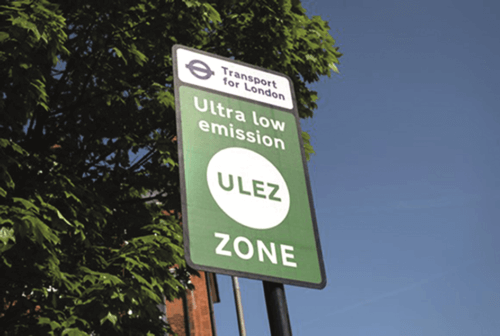A consultation on plans to expand London’s Ultra Low Emission Zone (ULEZ) to cover almost the whole of the capital from 29 August 2023 has been unveiled. The Mayor of London and Transport for London (TfL) have delivered a range of schemes to tackle the capital’s ‘toxic air crisis,’ the climate emergency and traffic congestion, but say that further bold action across the city is required. Around 4,000 premature deaths in 2019 were attributed to air quality, with the greatest number in outer London. Bromley, Barnet, Havering and Croydon were the boroughs with the highest number of early deaths, showing that poor air quality is not just a problem in central London.
Traffic congestion also continues to be a persistent problem in the capital, with the cost to the London economy estimated to be £5.1 billion last year. Nearly two-thirds of the cost of congestion in London has been attributed to traffic delays in outer London.
The Mayor said he considered a range of options when deciding the next steps to take in dealing with the emergency facing the capital. In the short term, it is believed that expanding the ULEZ London-wide will have the biggest effect on emissions relative to the cost to Londoners as a whole, as well as helping to tackle the climate emergency and traffic congestion. The current £12.50 daily charge level for cars, vans and motorbikes that do not meet the standards would be retained. This would be supported by a revision of the Mayor’s Transport Strategy, which is also part of this consultation. The consultation will also ask Londoners to help shape the future of road user charging in the capital, and could include scrapping existing charges such as the Congestion Charge and replacing them with a single road user charging scheme that uses more sophisticated technology to make it ‘as simple and fair as possible.’
If a larger zone were introduced, it is believed that it would have a significant impact by the end of 2023. It is estimated that the number of cars not meeting the tough ULEZ standards each day in outer London would fall from 160,000 to 46,000 and the number of vans from 42,000 to 26,000. TfL said the proposals would mean the air around an additional 145 schools, mostly in outer London, would meet the interim WHO target for nitrogen dioxide and see a further 340,000 Londoners living in areas meeting these international health-based standards.
TfL says it is working quickly to clean up its services, and has introduced more than 800 zero-emission buses, making it the largest green fleet in western Europe. Licensing standards mean that over a third of the city’s black cabs are now zero-emission capable. As part of the wider move to electric, TfL says that more than 10,000 charging points are now available now within the M25 – a third of the UK-wide total.
Mayor of London Sadiq Khan said: “The air Londoners breathe is so toxic it stunts children’s lungs, exacerbates chronic illness and contributes to thousands of premature deaths each year. More than half of the 500,000 Londoners with asthma live in outer London and all areas of London still breach safe levels of pollution.
“That’s why my proposals for expanding the Ultra-Low Emission Zone are the right thing to do. Air pollution is not just a central London issue and Londoners in the outer boroughs should be able to enjoy the clean air benefits the ULEZ brings. We’re keen to hear from all Londoners, so please share your views on my plans to build a better London for everyone – a safer, fairer, greener and more prosperous city for all Londoners.”


